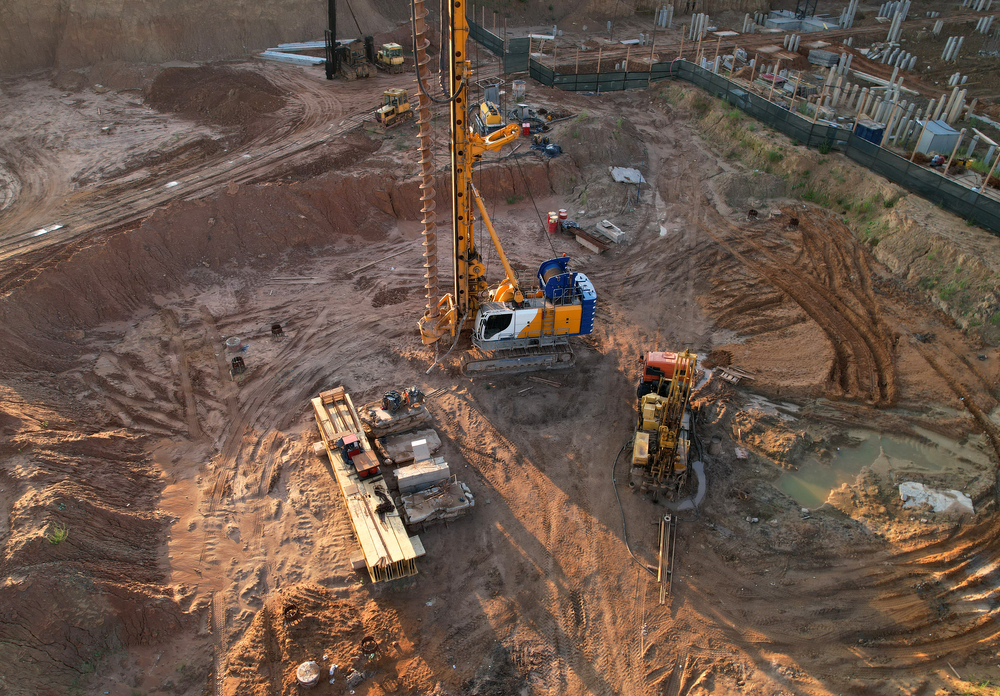Get This Report on Geotheta
Table of ContentsIndicators on Geotheta You Need To KnowThe Ultimate Guide To GeothetaOur Geotheta DiariesThe Basic Principles Of Geotheta A Biased View of Geotheta

They conduct site investigations, gather samples, execute research laboratory tests, and analyze data to examine the viability of the ground for construction tasks - Engineer of Record. Based upon their searchings for, geotechnical designers provide referrals for foundation style, incline security, preserving frameworks, and reduction of geotechnical threats. They work together with other professionals, such as architects, structural designers, and construction teams, to make certain that geotechnical factors to consider are integrated into the general task layout and application
By assessing the actions and properties of soil and rock, they can identify potential geotechnical threats such as landslides, dirt negotiation, or incline instability. Their expertise helps avoid failings or mishaps that can jeopardize lives and building. Below are some in-depth obligations and duties of a geotechnical engineer: Website Examination: Geotechnical designers conduct website examinations to gather information on subsurface conditions.
They translate the data to comprehend the properties and behavior of the soil and rock, including their stamina, leaks in the structure, compaction characteristics, and groundwater conditions. Geotechnical Analysis and Style: Geotechnical designers evaluate the information gathered during site investigations to analyze the security and suitability of the site for building jobs. They carry out geotechnical estimations and modeling to evaluate factors such as birthing capability, settlement, slope security, side earth pressures, and groundwater circulation.
The 5-Minute Rule for Geotheta
Foundation Style: Geotechnical engineers play a critical role in making structures that can securely support the desired structure. They assess the dirt problems and load demands to figure out the suitable structure type, such as superficial foundations (e.g., footings), deep structures (e.g (https://experiment.com/users/geotheta)., heaps), or specialized strategies like soil improvement. They take into consideration aspects such as settlement limits, birthing capacity, and soil-structure communication to establish optimal structure layouts
They review construction strategies, monitor site activities, and conduct area examinations to validate that the style suggestions are followed. If unforeseen geotechnical problems occur, they examine the circumstance and provide referrals for remediation or adjustments to the design. Threat Analysis and Mitigation: Geotechnical designers examine geotechnical threats and threats connected with the project site, such as landslides, liquefaction, or dirt disintegration.

Partnership and Communication: Geotechnical designers work carefully with other specialists entailed in a task, such as architects, architectural engineers, and construction teams. Efficient communication and cooperation are important to incorporate geotechnical considerations right into the total job style and construction procedure. Geotechnical engineers supply technical competence, solution inquiries, and make certain that geotechnical requirements are satisfied.
The smart Trick of Geotheta That Nobody is Talking About
Here are some kinds of geotechnical designers: Structure Engineer: Foundation engineers concentrate on designing and examining structures for frameworks. They evaluate the dirt problems, lots needs, and site qualities to figure out one of the most ideal structure kind and layout, such as superficial structures, deep foundations, or specialized methods like heap foundations.
They review the variables influencing slope stability, such as soil properties, groundwater problems, and incline geometry, and create methods to protect against incline failings and minimize threats. Quake Designer: Quake designers concentrate on analyzing and making structures to hold up against seismic pressures. They assess the seismic risk of a site, assess dirt liquefaction potential, and establish seismic design criteria to guarantee the safety and strength of structures throughout earthquakes.
They carry out area screening, gather samples, and assess the collected information to characterize the dirt properties, geologic developments, and groundwater problems at a site. Geotechnical Instrumentation Engineer: Geotechnical instrumentation engineers focus on monitoring and determining the behavior of dirt, rock, and frameworks. They mount and keep instrumentation systems that keep track of aspects such as soil negotiation, groundwater degrees, slope movements, and architectural variations to evaluate efficiency and offer very early cautions of possible problems.
Geotheta Can Be Fun For Anyone
They carry out examinations such as triaxial examinations, consolidation tests, straight shear examinations, and permeability examinations to gather data for geotechnical evaluation and layout. Geosynthetics Engineer: Geosynthetics engineers focus on the design and application of geosynthetic materials, such as geotextiles, geogrids, and geomembranes. They use these products to enhance dirt security, reinforce slopes, give water drainage options, and control disintegration.
They have a tendency to be investigatory individuals, which suggests they're intellectual, reflective, and analytical. They are curious, systematic, logical, investigate this site logical, and rational. Some of them are likewise social, suggesting they're kind, generous, participating, patient, caring, valuable, compassionate, sensible, and pleasant - Consulting Engineers.
In the office setting, geotechnical designers make use of specialized software devices to execute computations, develop layouts, and analyze information. They prepare reports, evaluation project requirements, connect with clients and team members, and coordinate task activities. The workplace setting gives a conducive setting for research study, evaluation, and collaboration with other professionals involved in the project.
How Geotheta can Save You Time, Stress, and Money.
They regularly go to project sites to conduct website examinations, assess geotechnical conditions, and collect information for analysis. These brows through include taking a trip to various locations, sometimes in remote or challenging terrains. Geotechnical designers may carry out soil sampling, conduct tests, and monitor building activities to guarantee that the geotechnical elements of the job are being executed appropriately.
Geotechnical engineers likewise operate in specialized geotechnical laboratories. In these centers, they conduct experiments, carry out tests on dirt and rock samples, and analyze the engineering residential or commercial properties of the materials. Geotechnical research laboratory designers work extensively in these settings, taking care of testing equipment, running instruments, and recording data. They collaborate with various other research laboratory team to ensure precise and dependable testing results.